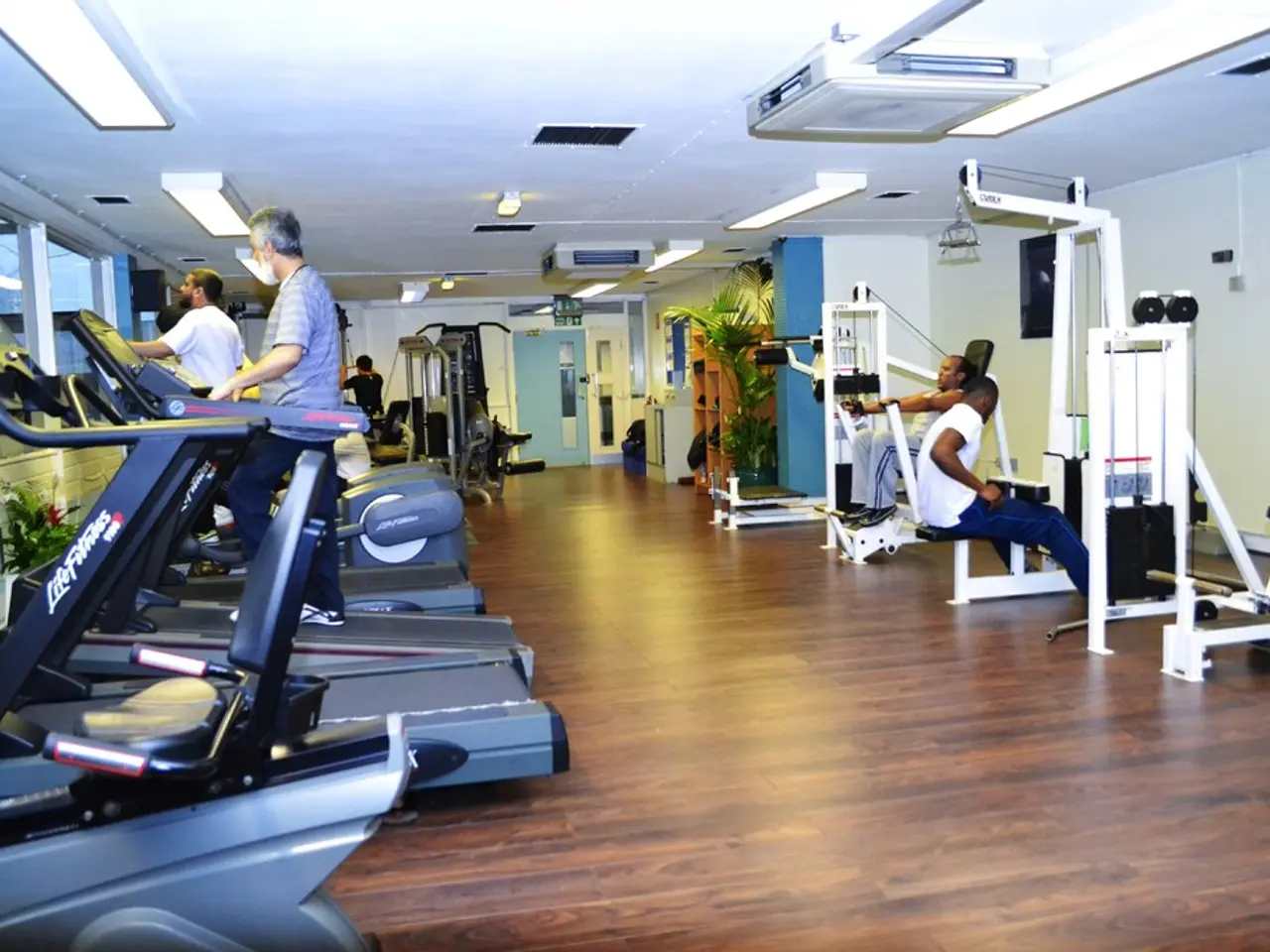"Expert fitness trainer provides guidance: Prioritize resilience over dominance for maintaining fitness in your 40s"
As men reach their 40s, maintaining fitness and health requires a strategic approach that addresses strength, mobility, aerobic exercise, and recovery. Expert advice recommends a balanced routine to help men stay strong, mobile, and injury-free while promoting optimal recovery.
Strength Training ------------------
Aim for 2-3 strength sessions per week, focusing on compound lifts such as squats, deadlifts, rows, and presses. These exercises engage multiple muscle groups and are efficient for building strength and muscle. Aim for 2-3 sets of 8-12 reps per exercise to balance strength and hypertrophy, using moderate to heavy loads while prioritizing strict form and technique to prevent injury.
Mobility and Warm-Up --------------------
Begin each session with 5-10 minutes of dynamic stretching and mobility drills such as leg swings, shoulder rolls, thoracic rotations, and deep squats. These exercises increase flexibility, joint range of motion, and reduce injury risk. Follow workouts with static stretching and foam rolling, especially for hips, chest, and shoulders.
Aerobic Training ----------------
Combine both high-intensity interval training (HIIT) and lower-intensity steady-state cardio (e.g., brisk walking, cycling, or “Jeffing” – a run/walk method). HIIT improves cardiovascular fitness and metabolism, while steady-state cardio supports heart health and aids recovery.
Recovery --------
Schedule rest or active recovery days between strength sessions. Prioritize quality sleep and adequate hydration for optimal recovery. Regular massage, foam rolling, and stretching help maintain tissue quality and joint health.
Sample Weekly Routine ----------------------
| Day | Focus | |------------|------------------------------| | Day 1 | Strength Training | | Day 2 | Aerobic (HIIT or Steady-State) | | Day 3 | Mobility/Active Recovery | | Day 4 | Strength Training | | Day 5 | Rest or Light Activity | | Day 6 | Aerobic Training | | Day 7 | Mobility/Recovery |
As people age, warm-ups, mobility, and technique become increasingly important in training. There is no one-size-fits-all approach to training in the 40s, but the suggestions above may help. Lower-intensity steady-state exercise is essential for cardiovascular health.
It's important to listen to your body and make adjustments as needed to maintain an active and healthy lifestyle as you age. Beth Lewis, a physiotherapist at Hooke Fitness, suggests that training should adapt to changes in the body as a person ages. People in their 40s should consider changes in their training routine to stay healthy and fit as they age.
Science suggests that incorporating health-and-wellness practices, such as strength training, mobility exercises, aerobic training, and focusing on recovery, can help men maintain fitness and overall health as they age. In the 40s, a fitness routine should emphasize aged-related adaptations, including gentle warm-ups, mobility exercises, and focusing on proper form and technique to prevent injuries.




